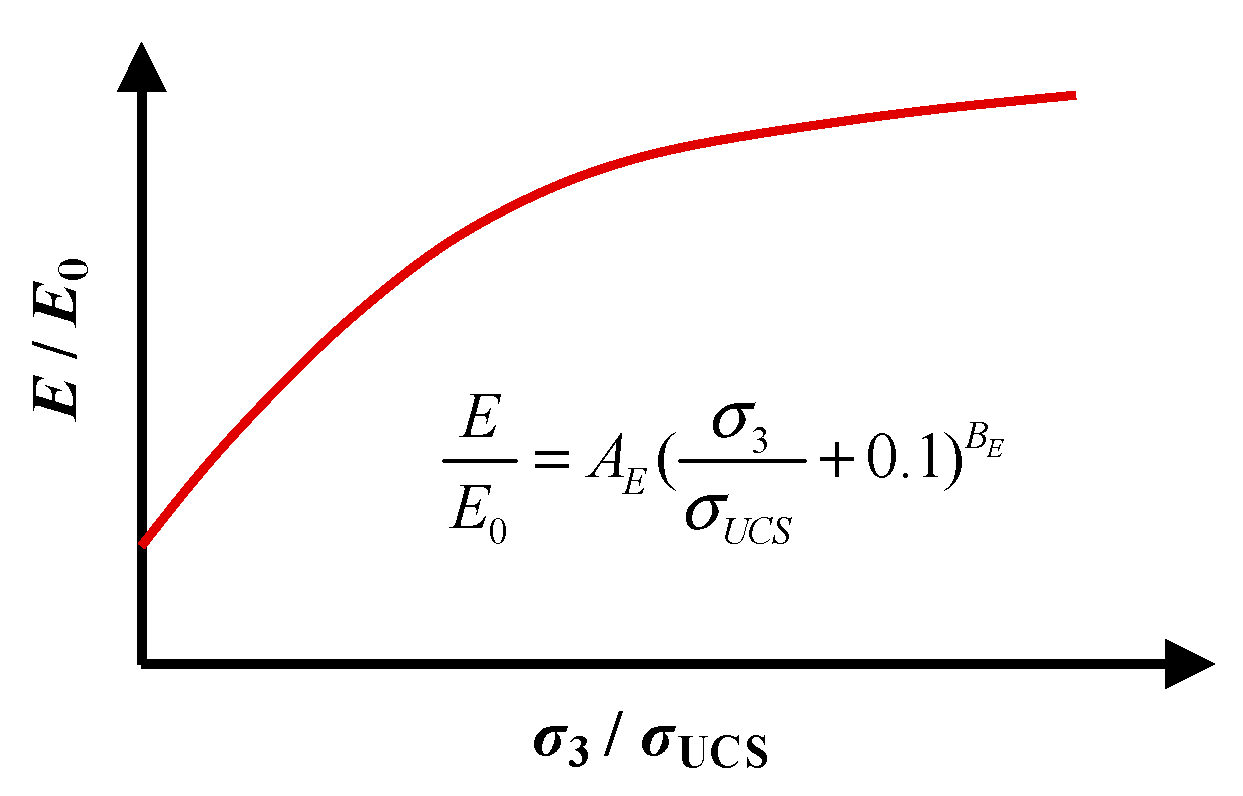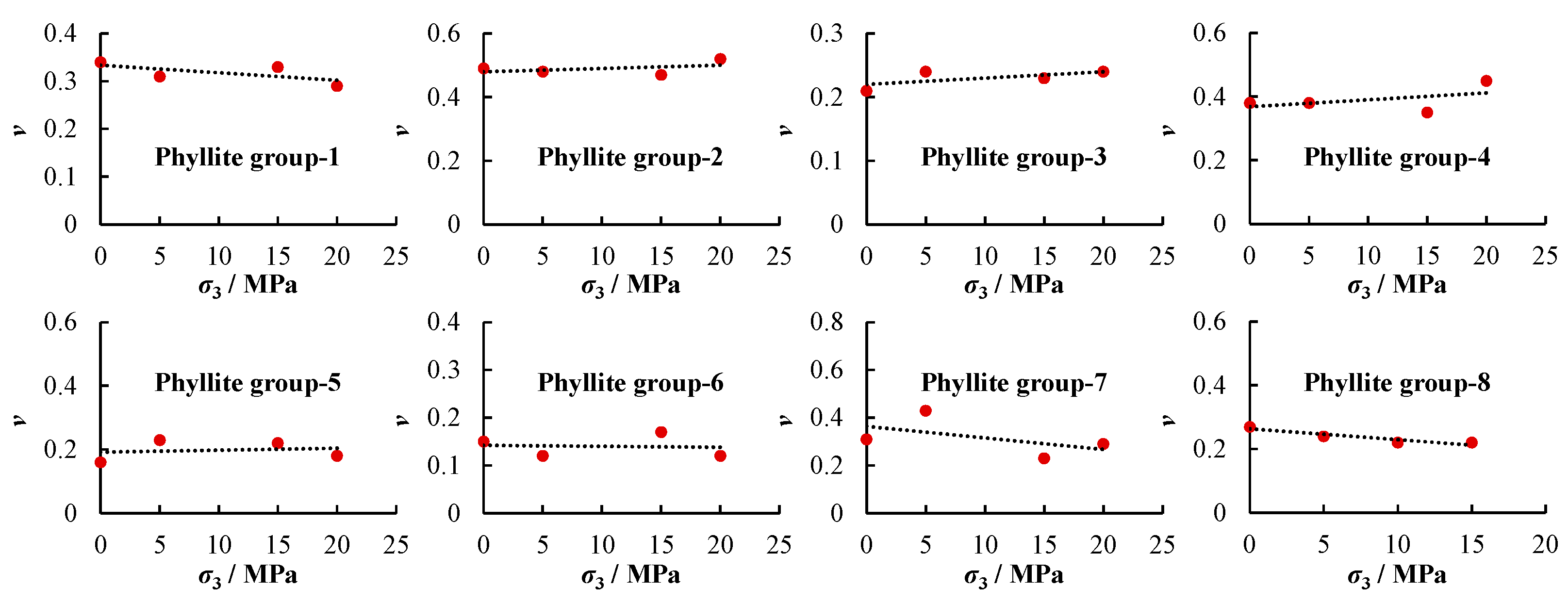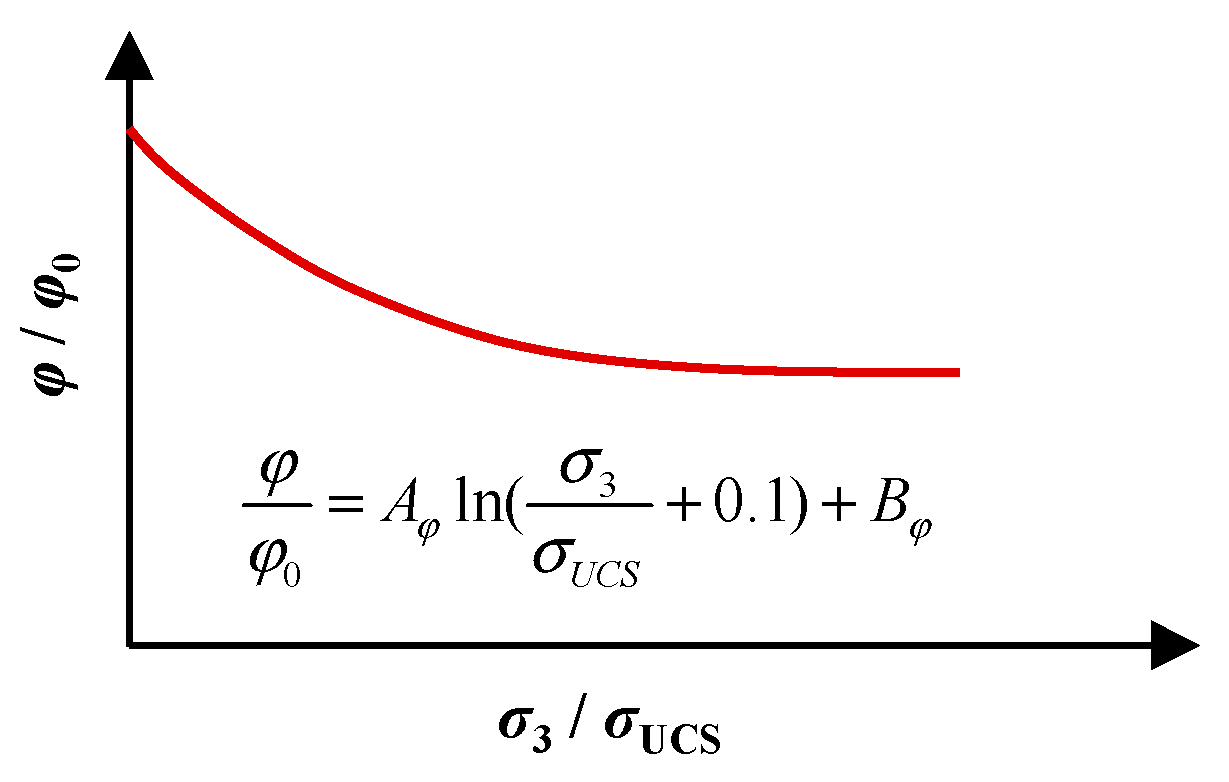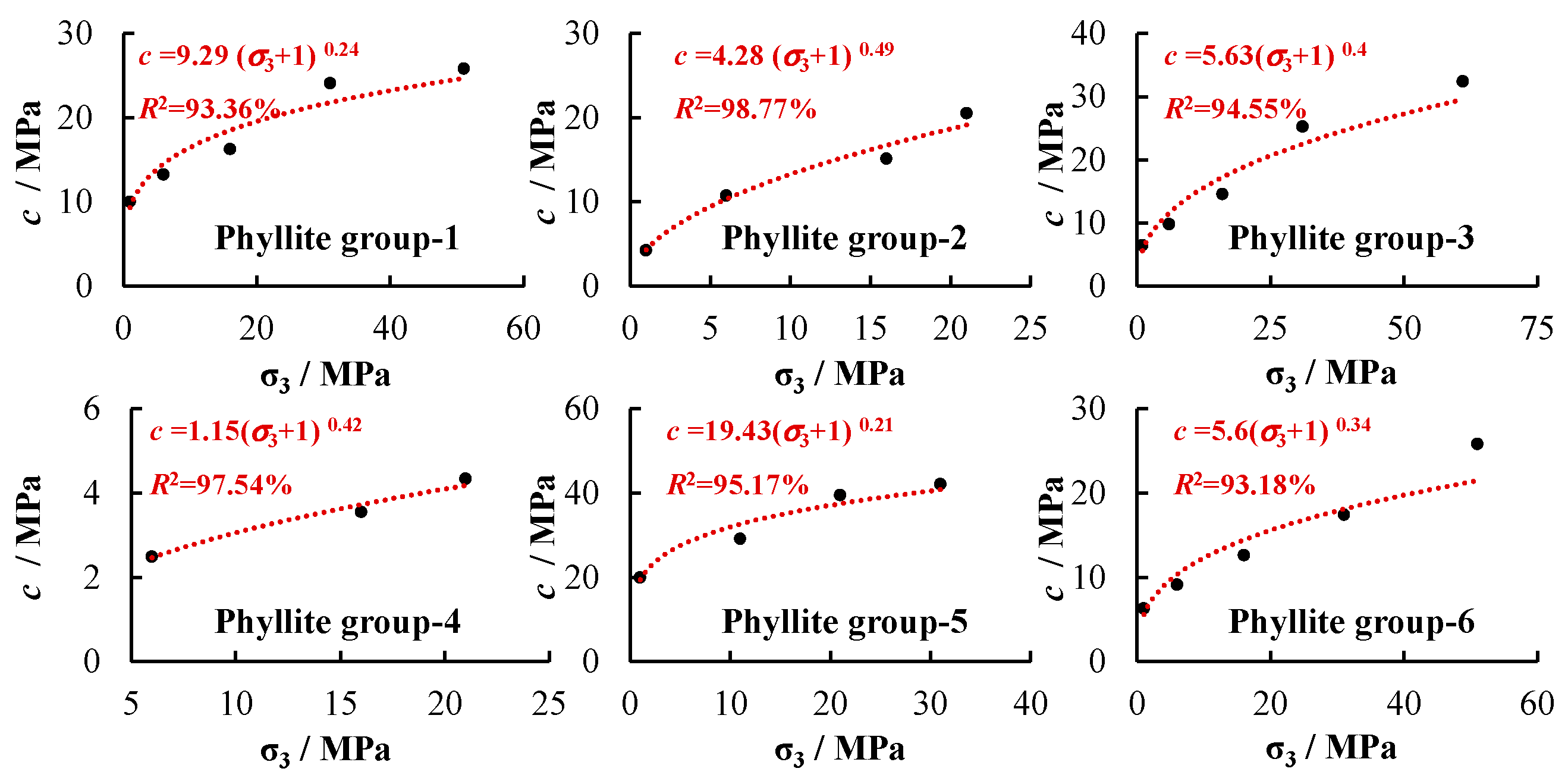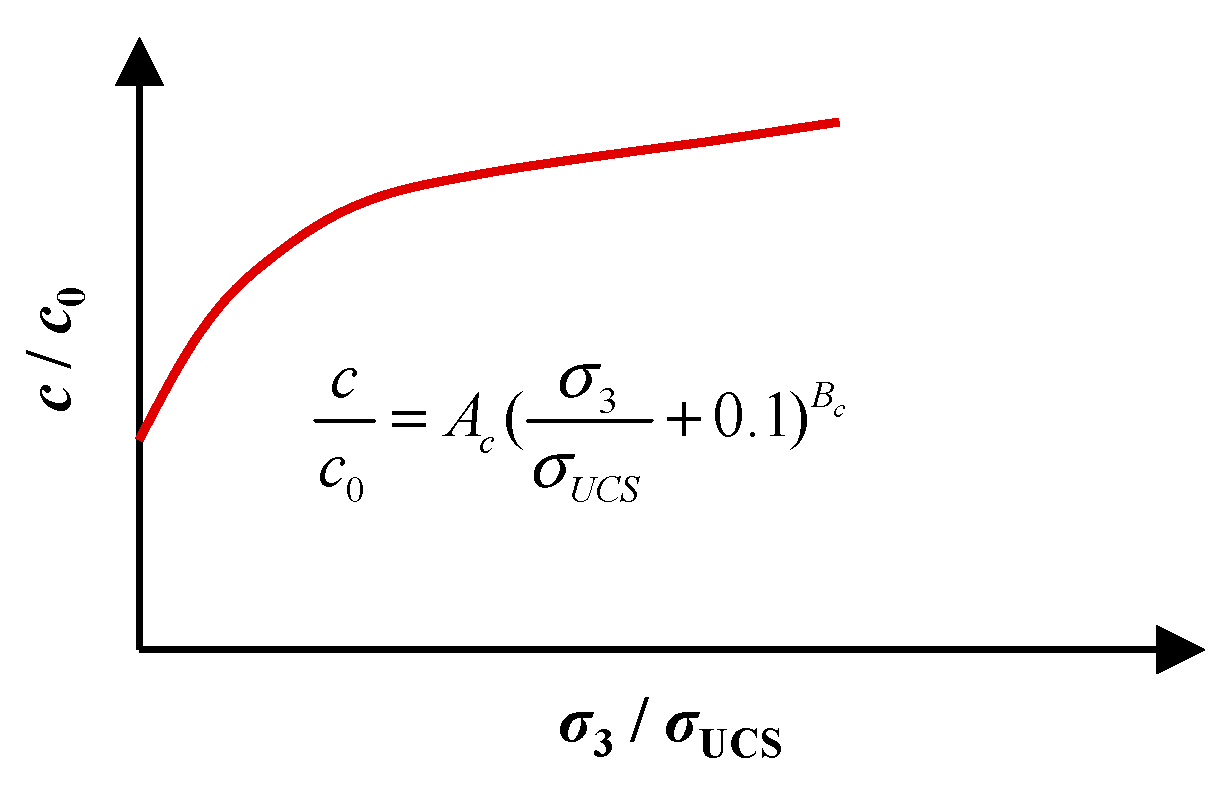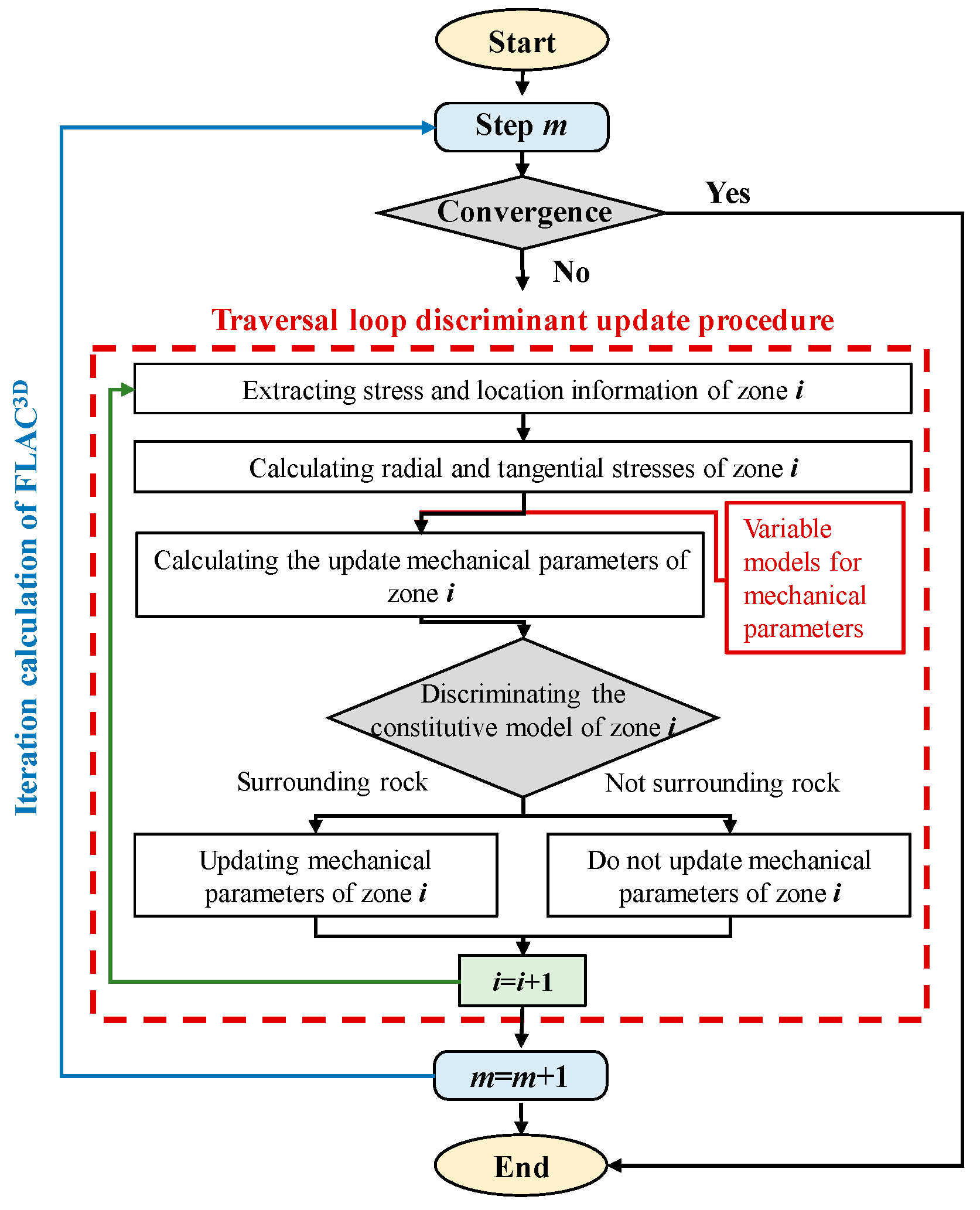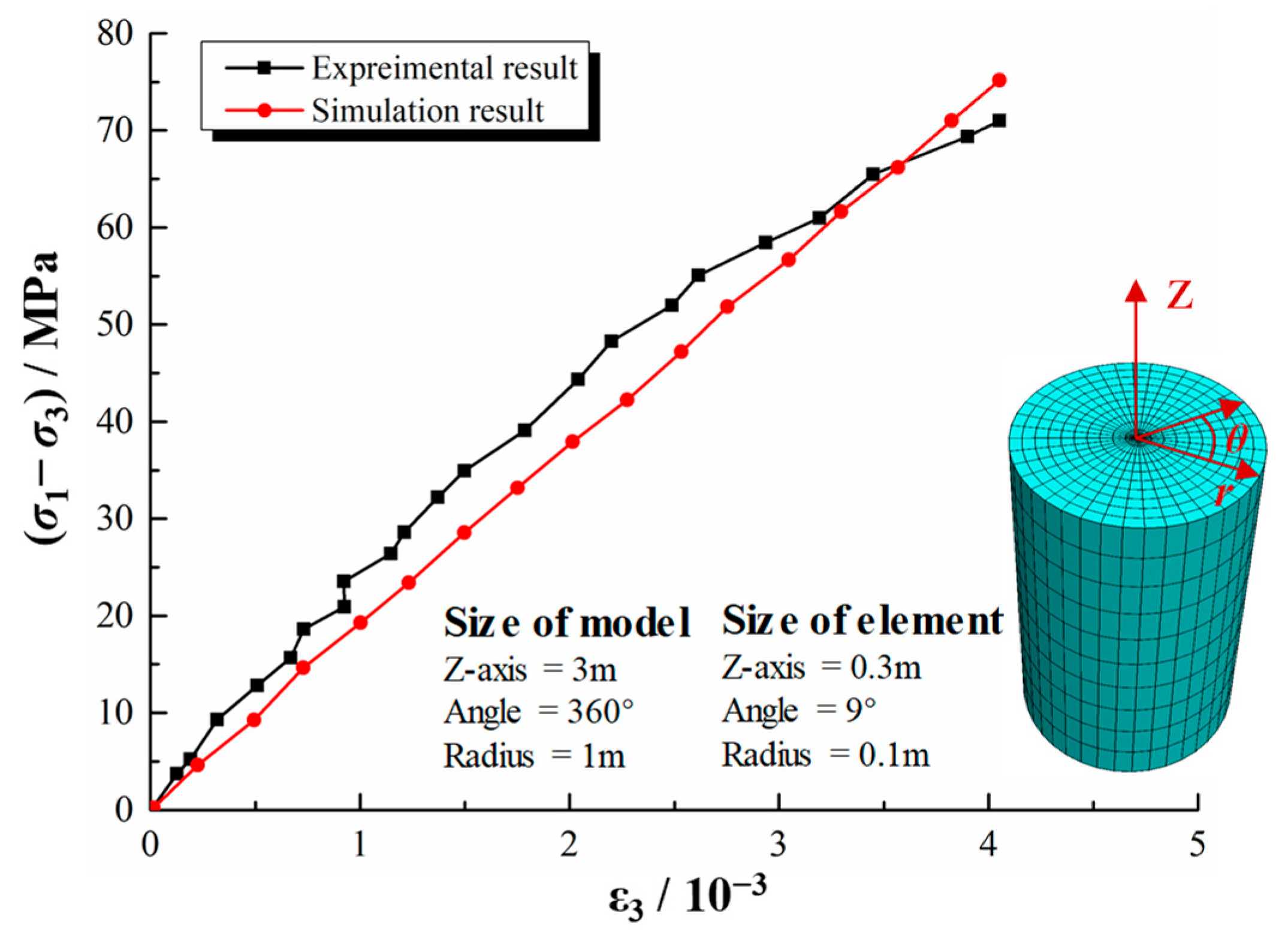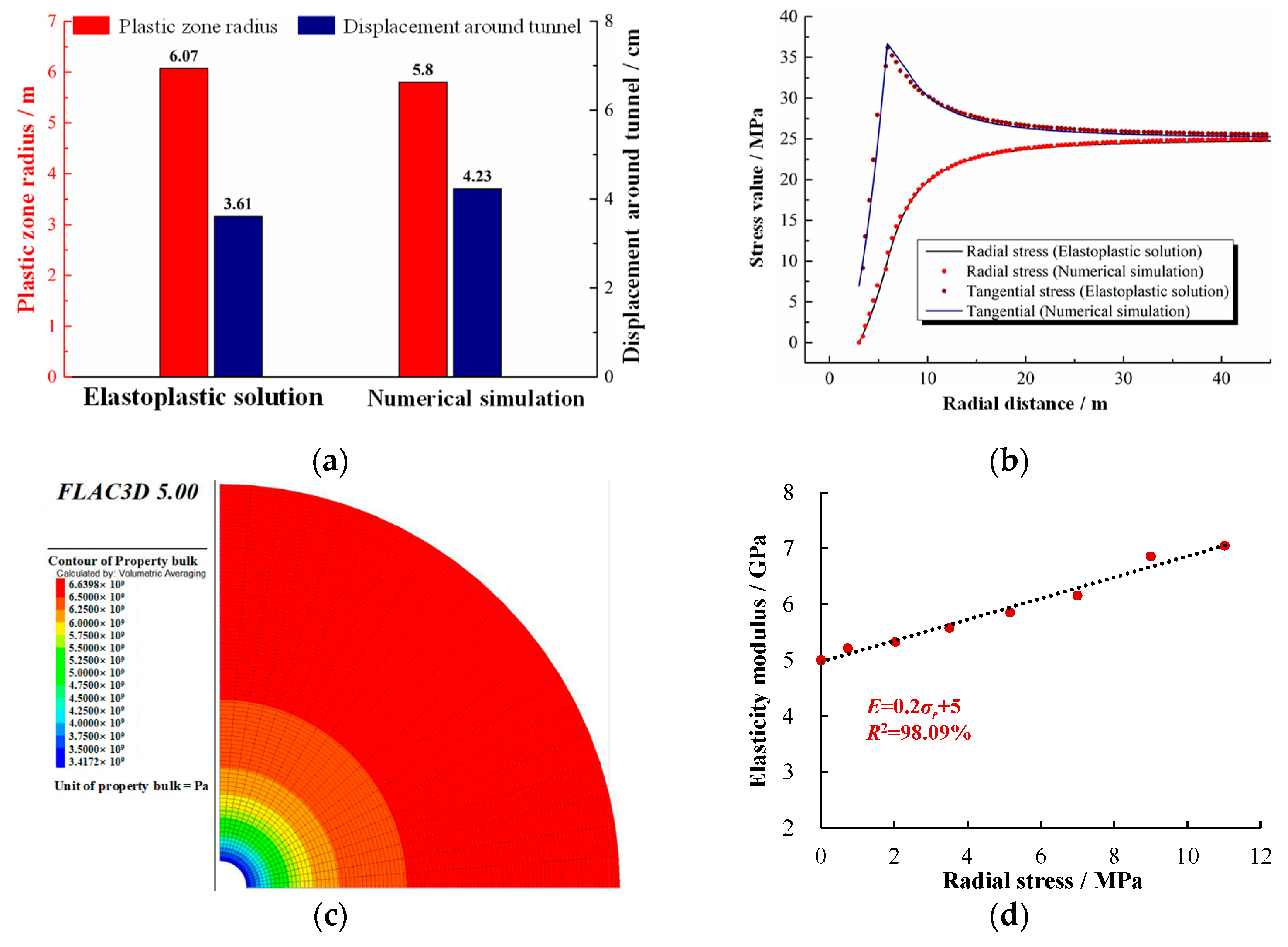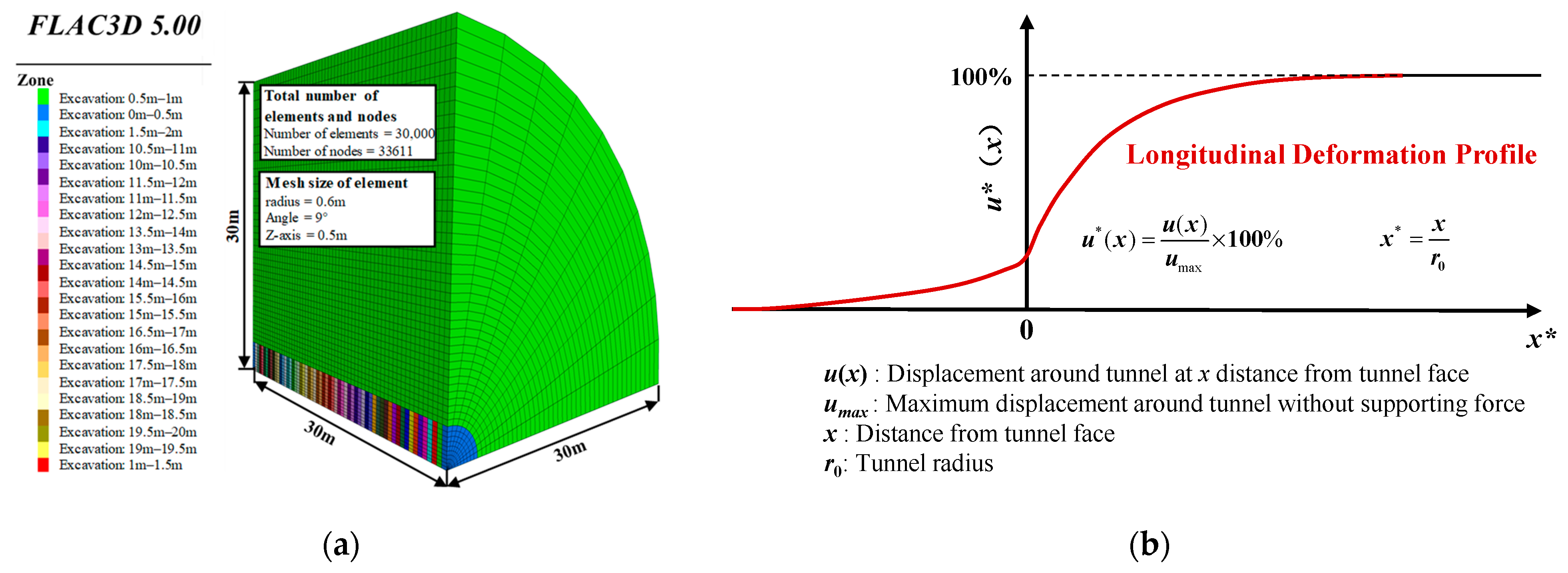However, the conventional numerical simulation method of FLAC
3D for tunnel excavation usually inputs the parameters of the surrounding rock prior to calculation, and such parameters are regarded as constant during the calculation process, which leads the conventional numerical simulation method to ignore the confining pressure influence on the mechanical characteristics of the surrounding rock in
Figure 9b and leads the numerical simulation result to deviate greatly from the practical soft rock tunnel.
Therefore, to realize the numerical simulation method of FLAC
3D to integrally consider the confining pressure influence on the mechanical characteristics of surrounding rock, this paper proposes the traversal loop discriminant update procedure with the FISH language and improves the numerical simulation method of FLAC
3D by this procedure; this can realize the automatic update for mechanical parameters of surrounding rock according to its stress state. The numerical simulation method of FLAC
3D considering the mechanical characteristic variations of soft rock with the confining pressure influence is shown in
Figure 10.
3.1. Improved Iteration Calculation Process of FLAC3D
To make all zones representing the surrounding rock automatically update their mechanical parameters according to their stress state in the calculation process of FLAC3D, this paper proposes the traversal loop discriminant update procedure with the FISH language and zone functions of FLAC3D.
The implementation process of the traversal loop discriminant update procedure is described as follows:
Taking the
m step of the iteration calculation of FLAC
3D as an example, the implementation process of the traversal loop discriminant update procedure is shown in
Figure 11.
At step m of the iteration calculation of FLAC3D, it is first judged whether the iteration calculation process converges with the convergence criterion of the maximum unbalance force ratio of the system through the FISH language (loop while) and zone function (zone.mech.ratio). If the calculation process converges, the traversal loop discriminant update procedure immediately terminates, if not, proceed to step 1 of the traversal loop discriminant update procedure.
(1) Step 1: Setting the traversal loop environment. Setting the traversal loop environment for all zones of the finite element model through the FISH language (loop) and zone function (zone.head, zone.next(zone_int)). In the traversal loop environment, from the first zone to the last zone, execute step 2~step 6.
(2) Step 2: Extracting stress and location information of zone i. The stress component and barycentric coordinate for zone i are extracted with zone functions (zone.stress(zone_pnt,int,int), zone.pos(zone_pnt,int)) in the finite element model and stored in computer memory.
(3) Step 3: Calculating radial and tangential stresses of zone i. Firstly, according to the relationship between the tunnel center and the barycentric coordinate of zone i, the overall coordinate system can be transformed into the polar coordinate system. Secondly, in the polar coordinate system, the radial and tangential stresses of zone i can be calculated by all stress components of zone i obtained from Step 1 with the following equations, which are introduced into FLAC3D through the FISH language.
(4) Step 4: Calculating the update mechanical parameters of zone i. Firstly, through the FISH language, variable models for mechanical parameters of soft rock with confining pressure influence are introduced into FLAC3D. Secondly, the radial and tangential stresses of zone i are substituted for the variable models, in which tangential stress is the first principal stress and radial stress is the third principal stress. Then, the updated mechanical parameters of zone i can be obtained and stored in computer memory.
(5) Step 5: Discriminating the constitutive model of zone i. Firstly, the constitutive model information can be extracted with the zone function (zone.model(zone_pnt)). Secondly, through the FISH language, discriminate the constitutive model of zone i. If its constitutive model represents the surrounding rock, then its mechanical parameters for zone i are updated with the updated mechanical parameters from step 3 through the zone command (zone property), if not, no mechanical parameters of zone i are updated.
(6) Step 6: Executing step 2~step 5 for the next zone (i + 1). Until all zones of the finite element model are executing step 2~step 5, exiting of the traversal loop environment and traversal loop discriminant update procedure is completed.
After the traversal loop discriminant update procedure is completed, step 1 of the iterative calculation of FLAC3D is executed. Then, at the (m + 1) step of the iteration calculation of FLAC3D, repeat the above convergence judgment and traversal loop discriminant update procedure until the iteration calculation of FLAC3D converges.
3.3. Comparison Example
To compare the stress and displacement field result around the tunnel with the influence of the confining pressure (by proposed simulation method) and without the influence of the confining pressure (by conventional simulation method), the stress field distribution and displacement around the tunnel with different initial pressure conditions (5 MPa, 15 MPa, 25 MPa and 35 MPa) are obtained. Stress and displacement fields of surrounding rock with confining pressure influence are obtained by the proposed numerical simulation method with variable models for mechanical parameters of soft rock, and stress and displacement fields around tunnels without confining pressure influence are obtained by the conventional simulation method with the mechanical parameter of surrounding rock under the 0 MPa confining pressure condition.
In the comparison example, the tunnel radius is 3 m, the supporting force is 0 kPa and the variable models for the mechanical parameters of soft rock from the experimental results of the Muzhailing tunnel [
26] are listed in
Table 8. The finite element model and size of the element in the comparison example are the same as those of the tunnel engineering example.
The stress and displacement field around the tunnel comparison results with and without confining pressure influence under different initial pressure conditions are shown in
Figure 15.
In
Figure 15a,b, the displacement around the tunnel and the plastic zone radius of the surrounding rock with the confining pressure influence are basically consistent with those without the confining pressure influence under the lower initial pressure condition. However, the influence of the confining pressure on the mechanical characteristics is more prominent, and the difference between the two conditions is more obvious for the displacement around tunnel and plastic zone radius of the surrounding rock with increasing initial pressure.
The main reason for the abovementioned phenomenon is the strengthening effect of the confining pressure on the surrounding rock, and this effect of the confining pressure is increasingly significant with increasing initial pressure. Therefore, after soft rock tunnel excavation under high geo-stress conditions, due to the strengthening effect of the confining pressure on the surrounding rock, the practical displacement around the tunnel and the plastic zone radius of the surrounding rock are smaller than those obtained by the conventional method (without the confining pressure influence). Similarly, as shown in
Figure 15c,d, due to the strengthening effect of the confining pressure on the surrounding rock, the stress level of the surrounding rock with the confining pressure influence is higher, and the disturbance range is smaller than those without the confining pressure influence.
Therefore, the abovementioned comparison results prove that the improved numerical simulation method can perfectly reflect the influence of the confining pressure on surrounding rock and that the simulation results are more consistent with practical soft rock tunnels.

